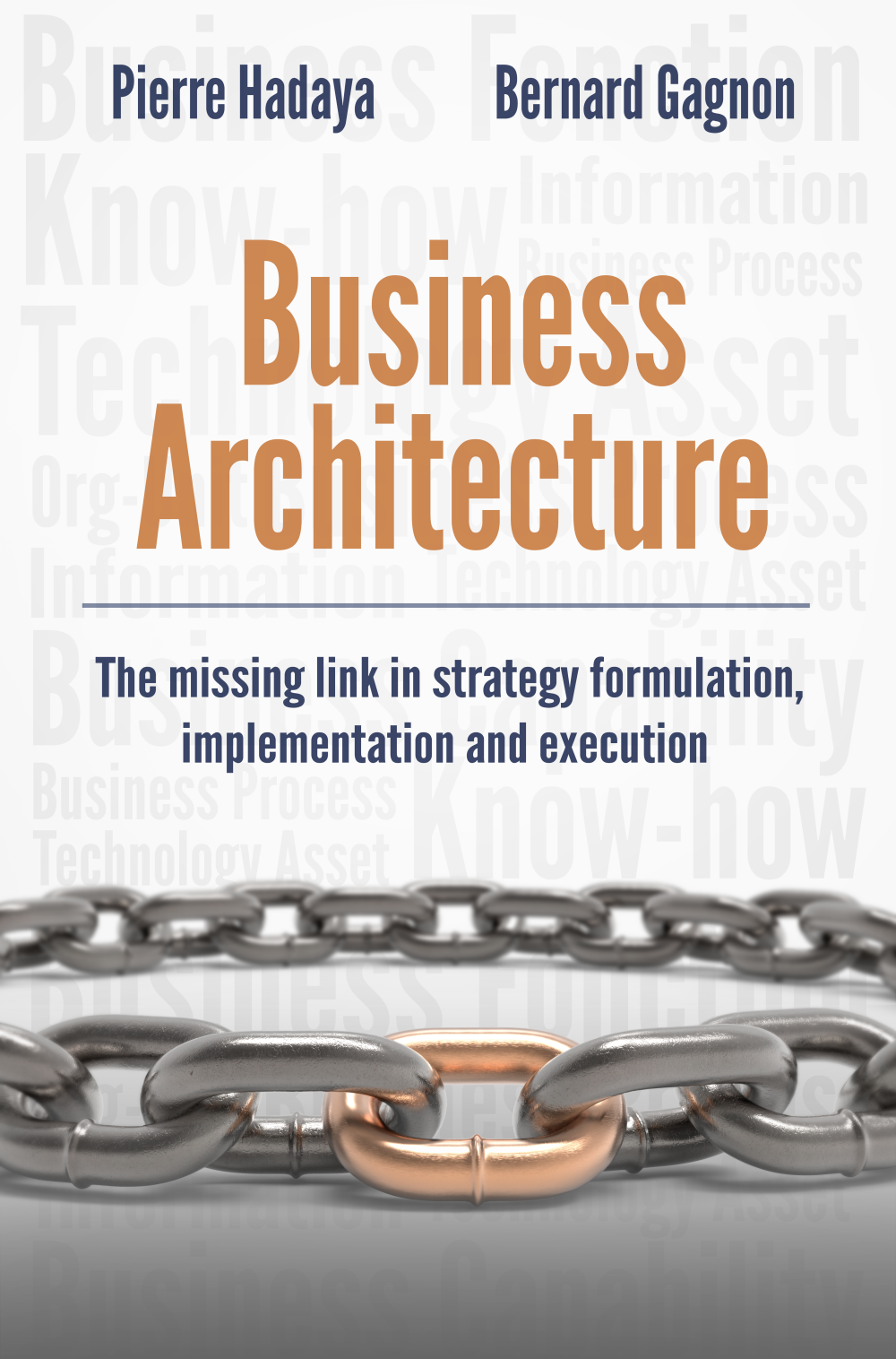The Four Dimensions of Business Agility
By Bernard Gagnon and Pierre Hadaya
April 2018
Abstract
Since the 1990s, the importance of agility in the success of organizations has gradually come into the spotlight. As a result, more and more organizations are striving to increase their agility. This article serves as a foundation for a series of upcoming articles aimed at helping organizations in these efforts. Its purpose is to identify and clarify the nature of the four dimensions of business agility.
In the business world, agility is defined as the ability of an organization to respond quickly and effectively to changes in market demands (Brown and Bessant, 2001). Agility is not something an organization has or does not have. Indeed, every organization has a certain speed and effectiveness in meeting changes to market demands. The performance and longevity of an organization, however, tends to increase with its degree of agility (Bazigos et al., 2015; Vázquez‐Bustelo et al., 2007; Worley et al., 2014). This is especially true for organizations that are more agile than their competitors.
Becoming more agile does not occur by happenstance or by merely telling employees to work in more agile ways. To become more agile, organizations must undertake initiatives specifically conceived for that purpose. These initiatives can take the form of internal transformation projects (e.g., change a process) or courses of actions designed to bring about changes in the external environment of the organization (e.g., get a law changed). While some of these initiatives may take just a few months to accomplish, others may be more important and require years of effort.
For these initiatives to be successful, organizations must first understand the nature of the four dimensions of business agility and decide which ones are most important for them to progress along in the next few years. Second, they must understand what the internal and external factors that determine their degree of agility along each of the four dimensions are. Third, they must understand upon which of these factors they can act to increase their agility as desired, and what types of initiatives are required to do so. This understanding is especially important since ill-conceived initiatives can appear to improve agility in the short-term but diminish it in the mid- to long-term.
The purpose of this article is to identify and clarify the nature of the four dimensions of business agility. This conceptualization is based on an extensive literature review and research on our part. It will serve as a foundation for a series of upcoming articles aimed at helping organizations become more agile.
The Importance of Agility
Agility is important for all organizations and especially so for those operating in rapidly evolving markets. There are three reasons for this. First, the more agile organizations are, the faster and the more effectively they can adapt themselves to deprive their competitors of any advantage they may have recently gained.
Second, being more agile than their competitors enables organizations to advance to the head of the pack by making strategic moves at a faster pace than their competitors can. When combined with an ability to continuously and successfully innovate, being more agile than their competitors enables organizations to go further than just responding to market changes. It allows them to regularly cause market demand changes that their competitors have to catch up to.
Third, in addition to being a tool used to counter the strategic moves of competitors or gain a competitive advantage, being more agile than competitors can, in some circumstances, be a competitive advantage in itself. Indeed, it can enable organizations to respond to market demands without having to complete lengthy transformation or R&D projects first. For example, a commuter train manufacturer with a proven platform, a flexible assembly plant, and an agile R&D capability may be able to deliver trains customized to its customers’ exact specifications in less time and at a lesser price than its competitors.
The importance of being highly agile and more so than competitors is further heightened by the increasing number of organizations actively working to improve their agility. This growing interest has created a race towards greater agility in which the laggards may very well pay a bitter price.
Organizations that lack agility can easily put themselves in adverse situations. For example, their inability to maintain their products and services relevant to current market demands is likely to lead to a progressive loss of market share. Also, their inability to quickly scale-up production can force their customers to migrate to other suppliers. Finally, their inability to quickly reduce costs during bad times can lead to financial difficulties. A lack of agility can even be deadly. Indeed, the situation of organizations that lack agility can get untenable to the point that they force organizations to either get acquired, downsize until they become shadows of their former self, or go bankrupt. History is filled with once successful businesses that faded away because they failed to recognize and respond to market-demand changes in an effective and timely manner. What is more, globalization and the ever-increasing rate of innovation are continuously accelerating the pace of market-demand changes. The organizations that lack agility cannot keep up and get weeded out at an increasing rate. The fact that the life expectancy of companies in the Fortune 500 has fallen from 75 to 15 years over the last 50 years (Denning, 2011) is especially telling in that matter.
Sustainable Agility
As discussed above, organizations must be more agile than their competitors to survive and thrive in today’s market. However, for their agility to be sustainable, organizations must carefully choose the initiatives they undertake to improve their agility. Indeed, some initiatives may help respond quickly to current market demands but result in hard-to-remove hindrances that will restrict agility in the future. For example, to accelerate decision making, some organizations have eliminated the planning and control activities that were put in place in the past to ensure the long-term soundness of decisions. Without this guardrail, these organizations have quickly slipped into short-termism. In such a context, managers are quick to understand that to get promoted they have to demonstrate their ability to deliver quickly and as a result, start making shortsighted decisions that latter curtail their organization’s agility. The negative impacts of these short-signed decisions are the worst when they pertain to expensive assets such as information systems and production equipment. Opting for the cheapest and fastest way to make changes to these assets can very easily make future changes much longer and expensive to accomplish. In fact, we have come across many situations where changes that should have been relatively simple to do, had become so large and expensive that they were now economically unviable.
The Four Dimensions of Business Agility
The degree of agility of an organization can vary along each of the following dimensions (in alphabetical order): Operations, Research & Development, Transformation and Strategy.
Operation Agility
Operation agility is the ability to quickly increase or decrease the operations’ throughput or shift from manufacturing or supplying one set of products and services to another in a manner that has no significant penalty on time, cost, quality, and functionality.
Examples:
- The ability of a city to make rapid adjustments to the size of its workforce to cope with seasonal changes in the services demanded by its citizens.
- The ability of a production line to manufacture multiple models of household appliances and to switch instantly from the production of one to that of another with no significant quality degradation or costs increase.
- The ability of a manufacturing plant to produce a range of products, including new ones, with no or limited physical changes to its equipment.
Research & Development Agility
Research & Development agility is the ability to quickly develop and market new or improved products and services that meet evolving customer demands in terms of price, quality and functionality. This includes the ability to quickly make changes to the R&D project portfolio in response to internal and external events, and to reallocate resources when needed.
Examples:
- The ability of a manufacturer to leverage its proven platform to rapidly design new tramway cars to the specific requirements of a major city.
- The ability of a business unit to quickly shift its R&D efforts from one product to another that utilizes new technologies to better meet customer demands.
- The ability of a software company to deliver a small set of new customer-requested features every six months instead of providing only major upgrades every three years.
Transformation Agility
Transformation agility is the ability to quickly and effectively make lasting changes to the functioning and assets of the organization and bring about changes in the external environment of the organization. It includes the ability to quickly make changes to the portfolio of transformation initiatives in response to internal and external events and to reallocate resources as needed.
Examples:
- The ability of an organization to leverage business architecture and change management to accelerate the transformation of its culture, organizational structure, and processes.
- The ability of a company to use its fine-tuned merger and acquisition capability to rapidly integrate a newly acquired firm.
- The ability of an organization to use the Agile software development methodology to deliver the information systems it needs to improve its capabilities rapidly.
- The ability of an organization to work with its suppliers to improve the quality of the component parts it buys from them.
Strategy Agility
Strategy agility is the ability to quickly and effectively make changes to the strategy of the organization, at the corporate or business-unit level, in response to internal and external events.
Examples:
- The ability of a mortgage lending firm to identify a coming slowdown in the residential market and, quickly shift its strategic focus to the commercial market.
- The ability of a manufacturer to quickly uncover opportunities in a geographic market it is trying to penetrate and, in response, adjust its product mix to properly serve that market.
Although R&D and Transformation agility are conceptually distinct, they can, in some situations, be difficult to distinguish from each other. For instance, nowadays the ability of a financial institution to bring new products to market (i.e., R&D agility) is strongly tied to its ability to rapidly and effectively make changes its information systems and processes (i.e., transformation agility).
Upcoming articles
This article identifies and clarifies the nature of the four dimensions of business agility. This conceptualization will serve as a foundation for a series of upcoming articles aimed at helping organizations become more agile. Future articles in the series will, amongst other things, identify the factors that either improve or impede agility, as well as describe how these factors influence the four dimensions of agility and show how they can be acted upon to improve agility.
References
Bazigos, M., De Smet, A., Gagnon C. (2015) Why Agility Pays, McKinsey Quarterly, Nov.
Brown, S., and Bessant, J. (2003) The Manufacturing Strategy-Capabilities Links in Mass Customisation and Agile Manufacturing – An Exploratory Study. International Journal of Operations & Production Management, 23(7), 707-730.
Denning, S. (2011) Peggy Noonan on Steve Jobs and Why Big Companies Die. Forbes, Nov. 19.
Vázquez‐Bustelo, D., Avella, L., Fernández, E. (2007) Agility Drivers, Enablers and Outcomes: Empirical Test of an Integrated Agile Manufacturing Model. International Journal of Operations & Production Management, 27(12), 303-1332.
Worley, C.G., Williams, T. and Lawler, E.E. III (2014) The Agility Factor – Building Adaptable Organizations for Superior Performance. Jossey-Bass, San Francisco.
© 2018 ASATE Group Inc.

